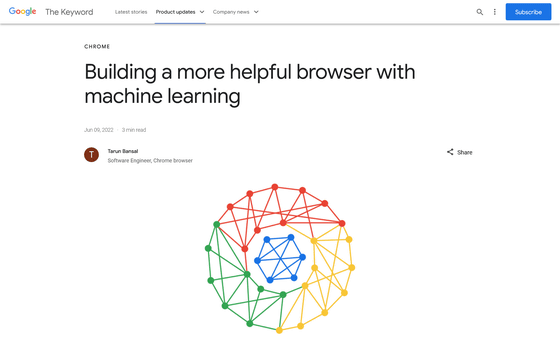Chrome 102 now automatically blocks annoying notifications and phishing scams with on-device machine learning

From Chrome 102, on-device machine learning built into the browser will be able to identify websites that make annoying permission requests for notifications and automatically block them before popping up notifications or permission requests. Announced.
Building a more helpful browser with machine learning

Google Chrome's on-device machine learning blocks noisy notification prompts --The Verge
https://www.theverge.com/2022/6/9/23161292/google-chrome-machine-learning-notification-phishing-preferences
Google Chrome has a built-in phishing detection feature that allows you to scan your pages for matches to known fake or malicious sites.
In July 2021, Google announced performance improvements as part of the Chrome 92 update, stating that phishing site classification took 1.8 to 100 milliseconds. According to Google, by introducing a new machine learning model from March 2022, it has become possible to identify malicious sites and phishing attacks 2.5 times as much as before. Since this machine learning is performed on-device, it is characterized by not communicating with the outside world or running on cloud computing.
Google says, 'We're evolving how people interact with web notifications to further improve our browsing experience. Page notifications help keep you up to date on the sites you care about, but on the other hand. Prompts for permission to notify can be annoying. Chrome anticipates and hides prompts that may not be allowed to minimize interruptions in web browsing. In the next release, we will announce a machine learning model that makes this prediction entirely on-device. '
In Chrome, a screen that detects and notifies you that it is a malicious site (left) and a screen that automatically blocks notifications that the user is unlikely to allow (right)

By introducing machine learning to the browser, for example, when the user is likely to use voice search or sharing, it will be possible to automatically display the voice search or sharing button on the browser.

Google says, 'Our goal is to create a browser that is pure and continuously useful, and we're excited about the potential that machine learning offers. Please tweet to @googlechrome and let us know what you think. I commented.
Related Posts:
in Software, Posted by log1i_yk







